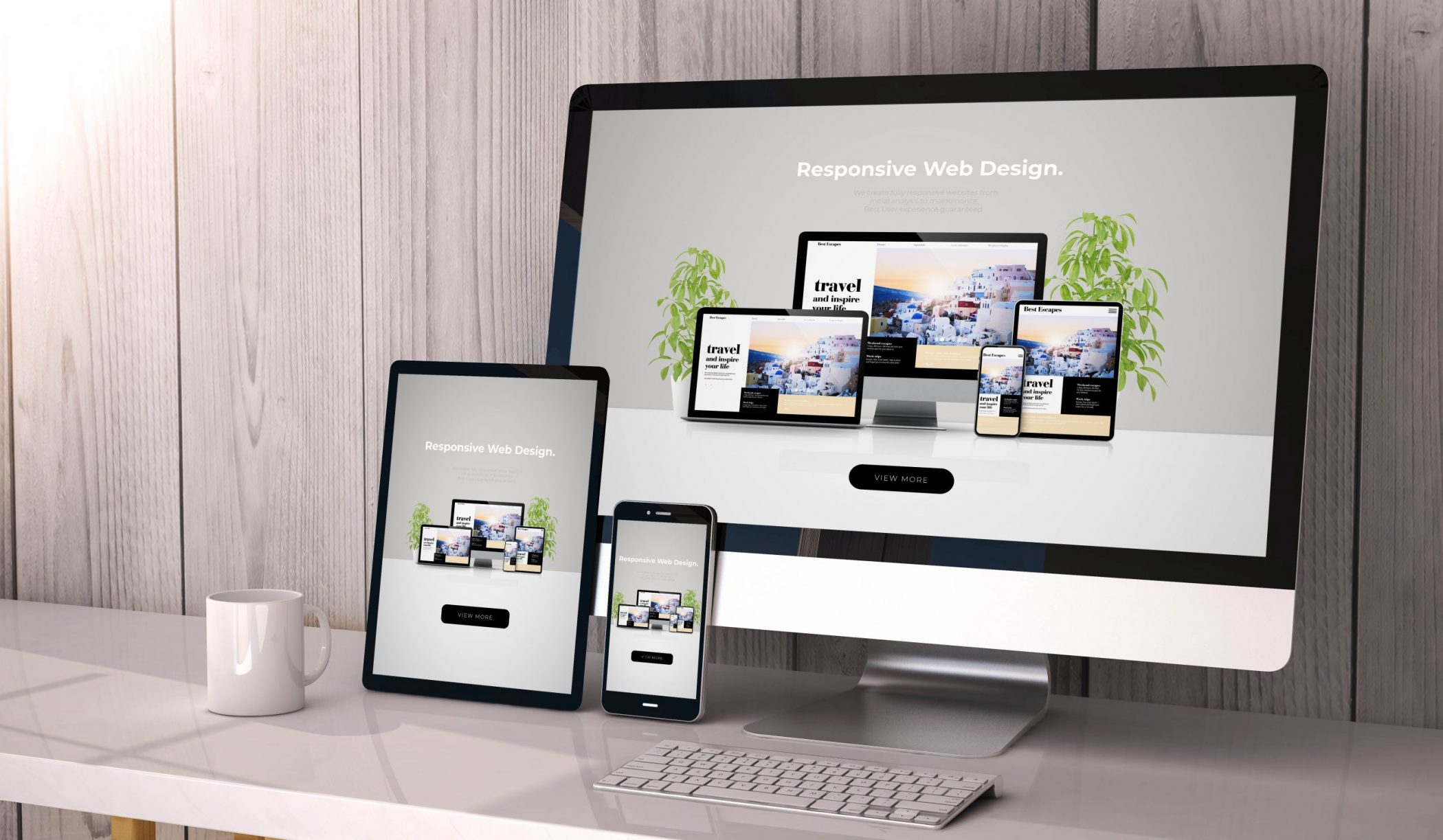Web Design London Ontario with Ranking Strategies and Responsive Design
Web Design London Ontario with Ranking Strategies and Responsive Design
Blog Article
Recognizing the Crucial Element That Compose Reliable Web Style Strategies
Comprehending the essential components can make all the difference in customer interaction and fulfillment when it comes to internet style. You require to contemplate facets like intuitive navigation and receptive design to create a seamless experience. That's just the beginning. Each component plays a critical duty in leading individuals via your content and affecting their habits. Interested regarding what actually drives these strategies? Allow's check out deeper into these important aspects.
The Relevance of Customer Experience (UX) in Web Design
Customer experience (UX) is the backbone of effective internet layout, forming just how site visitors engage with your site. When you prioritize UX, you create a space where customers feel comfortable, involved, and valued. A well-designed UX guarantees that your target market can easily browse your material, find information swiftly, and enjoy their total experience.You has to consider your individuals' choices and needs, as this understanding directly influences their satisfaction. By concentrating on elements like lots times, mobile responsiveness, and access, you boost their experience considerably.Moreover, a favorable UX promotes trust fund and encourages repeat sees, which can bring about higher conversion rates. Keep in mind, customers won't think twice to leave your site for a competitor if they encounter frustration or complication. Inevitably, buying UX isn't just about looks; it has to do with producing a user-centric style that keeps site visitors returning for even more.
Crafting User-friendly Navigating for Seamless Surfing
When developing an internet site, crafting intuitive navigation is crucial for guaranteeing site visitors can locate what they require without irritation. Begin by organizing your content practically; group associated web pages with each other to help customers predict where to discover details. Usage clear, concise tags for navigation links, preventing jargon that could confuse your audience.Consider executing a hierarchical structure with a major food selection and dropdowns for subcategories, making it very easy to pierce down into details subjects. Include a search bar to equip users to find material straight, particularly on bigger sites.Don' t forget mobile individuals; identify your navigating remains available on smaller sized displays. Keep it easy and regular across all pages to strengthen experience. By concentrating on these aspects, you'll develop a smooth browsing experience that keeps visitors involved and motivates them to check out more of what you need to supply.
Receptive Design: Adapting to Various Gadgets
As the selection of devices people use to access the internet remains to expand, guaranteeing your site is receptive has actually never been extra critical. A responsive design suggests your site adapts flawlessly to different screen dimensions, from mobile phones to desktop computers, providing an exceptional viewing experience. This adaptability not just boosts individual fulfillment however additionally improves your site's performance in internet search engine rankings.To create a receptive design, use versatile grids and designs that instantly readjust to the display's dimensions. Execute CSS media queries to tailor styles based on device features. Prioritize vital web content, ensuring it's easily accessible on smaller screens without frustrating individuals.
The Role of Visual Pecking Order in Effective Layouts
Visual hierarchy is essential for guiding your audience's attention where it matters most. By efficiently utilizing centerpieces, typography, color, and contrast, you can develop a layout that interacts your message clearly. Let's explore how these components interact to boost your style.
Significance of Focal Things
Focal factors are vital in web style, guiding individuals' attention to the most vital components on a web page. By strategically placing these centerpieces, you create a clear visual pecking order that improves customer experience. Consider what you want your site visitors to discover initially-- whether it's a call-to-action switch, an essential picture, or considerable information.Using contrast, size, and positioning, you can accentuate these prime focus, making them attract attention. Remember, the a lot more famous the prime focus, the more probable individuals are to engage with it. A properly designed design not only records interest but also leads customers through your content perfectly, guaranteeing they soak up the info that matters most. Focusing on prime focus is crucial for efficient interaction on your website.
Color and Contrast Usage
Effective use of color and comparison can substantially influence just how customers perceive your web site's web content. By picking a color palette that aligns with your brand name, you develop an emotional link with visitors. High contrast between message and background boosts readability, guaranteeing your message stands out. Use contrasting shades to highlight important aspects, like call-to-action switches, leading individuals' attention where it matters most.Additionally, balance is essential; as well much contrast can be frustrating, while also little might render your content unnoticeable. Implementing an aesthetic pecking order with color helps users navigate your site with ease. You want them to easily distinguish in between headings, subheadings, and body message, which boosts their overall experience. Inevitably, effective shade and contrast usage keeps customers involved and motivates them to explore even more.
Typography's Effect on Style
While it's very easy to ignore, typography plays an important role in shaping your website's design and total customer experience. It establishes a visual hierarchy that overviews site visitors via your content. By choosing the right typefaces, sizes, and styles, you can stress essential information and produce a seamless circulation. Utilizing larger headings helps customers rapidly identify areas, while smaller body message provides thorough understandings without overwhelming them. Constant typography not just improves readability but additionally enhances brand name identity. Bear in mind to balance attractive font styles with readability to preserve professionalism and reliability. Ultimately, reliable typography guarantees your message resonates, making your internet site more interesting and straightforward. Prioritizing this aspect can significantly raise your layout approach and impact.
Using Compelling Material to Involve Site Visitors
How can you maintain your site visitors engaged and coming back for even more? The solution lies in compelling material. Beginning by understanding your target market and what passions them. Develop helpful write-ups, enthralling stories, or amusing video clips that reverberate with their needs. Make use of a conversational tone to make your material relatable; it needs to seem like a pleasant conversation as opposed to a lecture.Incorporate visuals like infographics, images, and videos to break up text and keep things dynamic. Don't fail to remember to welcome communication-- ask inquiries, encourage comments, or consist of surveys to spark discussions.Also, prioritize clarity and conciseness. See to it your bottom lines shine through without unnecessary jargon or fluff. Remember, high quality over amount issues; it's much better to have fewer, high-impact items than a slew of mediocre ones. Eventually, when your web content's engaging, visitors will not only remain however also share it with others.
The Impact of Color Psychology on Customer Interaction
When you select colors for your website, consider how they can affect customer feelings and perceptions. Shades can improve your brand identity while likewise making sure availability with comparison. Understanding these elements can considerably increase user communication and interaction.
Color Meanings and Emotions
Comprehending color psychology is important for producing an engaging website design, as the colors you choose can affect and evoke certain feelings user interactions. Various colors can trigger different feelings; for instance, blue typically conveys depend on and calmness, while red can stimulate enjoyment or seriousness. When you include these shades thoughtfully, you assist your customers towards preferred activities. Yellow can motivate optimism and happiness, making it efficient for phone call to activity, while eco-friendly advertises relaxation and a connection to nature. By straightening your shade combination with the emotions you wish to generate, you improve individual experience. Consider your audience and the message you intend to share, ensuring your color options reverberate and produce a long lasting impact.
Brand Identity Via Colors

Color Contrast and Access
While choosing a color combination is crucial, guaranteeing appropriate contrast is crucial for availability. You want your internet site to be aesthetically attractive, yet it needs to also satisfy all individuals, consisting of those with aesthetic disabilities. High comparison in between text and background improves readability, making it much easier for everyone to engage with your content.Think regarding shade psychology, as well. Different colors evoke numerous emotions and responses. By comprehending just how shades effect customer communication, you can guide users towards desired activities. Using cozy colors can develop necessity, while great colors might infuse calmness. Constantly check your shade mixes to confirm they satisfy accessibility criteria, aiding you produce a comprehensive experience that reverberates with all visitors.
Optimizing Lots Rate for Boosted Performance
Given that customers anticipate internet sites to fill quickly, enhancing lots rate is critical for improving efficiency and customer contentment. A slow-loading website can irritate visitors and drive them away, so you require to take activity. Beginning by pressing photos and making use of modern-day styles like WebP. This can significantly lower data sizes without giving up quality.Next, decrease HTTP demands by integrating CSS and JavaScript data. Fewer requests indicate quicker lots times (website design london Ontario). Carrying out lazy packing for pictures and videos warranties that web content lots only when customers scroll down, enhancing initial lots speed.Additionally, utilize browser caching to keep regularly accessed resources, permitting repeat visitors to appreciate faster loading times. Pick a reputable holding supplier. Their performance straight impacts your site's speed
Frequently Asked Inquiries
Just How Can I Measure the Performance of My Internet Style Strategy?
To determine your web design method's performance, track customer engagement metrics like bounce rates, conversion rates, and ordinary session duration. Usage tools like Google Analytics to collect understandings and readjust your technique based on the information.
What Prevail Mistakes to Avoid in Web Style?
In internet design, click here avoid chaotic formats, irregular fonts, and slow-moving loading times (website design london Ontario). Don't overlook mobile responsiveness or overlook customer testing. Prioritize accessibility and warranty clear navigating to improve user experience and maintain site visitors engaged
Exactly how Typically Should I Update My Website Design?
You must update your web site design every 1 to 2 years, or whenever considerable adjustments take place in your brand or market. Routine updates keep your website fresh, enhance user experience, and boost capability.

What Devices Can Assist Analyze User Habits on My Website?
To evaluate user behavior on your site, you can utilize tools like Google Analytics, Hotjar, or Crazy Egg. They'll offer understandings right into customer interactions, helping you make notified choices for enhancing your site's performance.

Just how Do I Select the Right Typeface for My Web site?
Selecting the right typeface for your internet site includes thinking about readability, design, and alignment with your brand. Explore different fonts, confirm they're readable on numerous tools, and preserve uniformity across your web pages for a natural appearance. Integrate a search bar to encourage individuals to find material directly, particularly on larger sites.Don' t forget concerning mobile individuals; ascertain your navigating remains easily accessible on smaller sized screens. Reliable use of color and comparison can considerably affect just how users perceive your web site's content (website design london Ontario). Recognizing shade psychology is important for producing an interesting web style, as the colors you pick can stimulate specific emotions and affect customer communications. By recognizing how shades influence user interaction, you can lead customers toward wanted activities. Considering that customers anticipate internet sites to pack rapidly, maximizing tons speed is vital for enhancing performance and individual contentment
Report this page